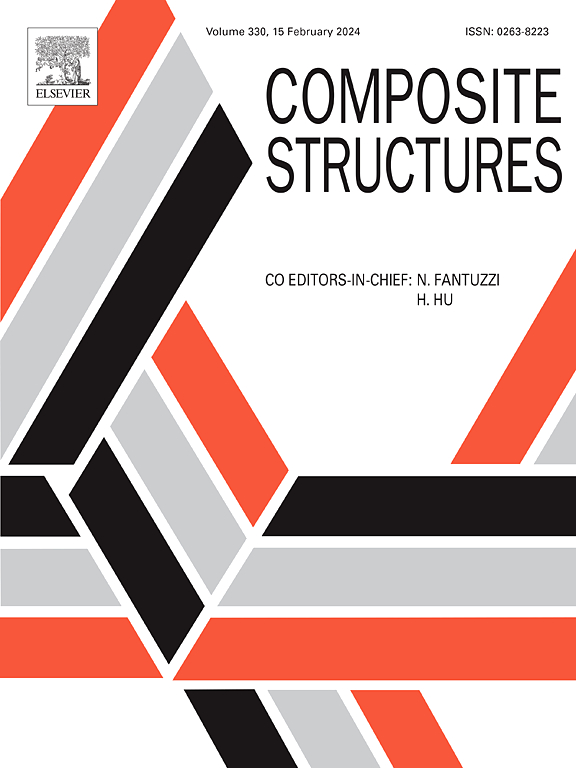Flexible radar-infrared compatible stealth skin metastructure based on multi-scale optimization design
IF 6.3
2区 材料科学
Q1 MATERIALS SCIENCE, COMPOSITES
引用次数: 0
Abstract
In order to meet the requirements of efficient flight over wide airspace and at high speeds, morphing aircraft have been gradually emerging as a new avenue for innovative developments in aeronautical systems. With the steady progress in multi-target detection capabilities, the development of radar-infrared multi-spectral stealth-compatibility flexible skinning has become essential to ensure optimum flight performance for morphing aircraft. In this context, the study proposes a novel multi-layered design for optimization, integrating micro-structure and macro-structure. Several electromagnetic wave attenuation mechanisms have been developed by embedding nanoparticles in a PDMS matrix combined with frequency selective metasurfaces. This approach has resulted in a flexible sandwich matrix with extraordinary mechanical properties (1.66 MPa tensile strength) and an ultra-wide absorption bandwidth (25.28 GHz, Reflection loss (RL) < −10 dB). In addition, by integrating the infrared shield layer (IRSL), radar-infrared compatible stealth was achieved with an emissivity as low as 0.26. The developed multi-layer composite structure not only solves the incompatibility of radar and infrared stealth, but also demonstrates excellent flexibility in the conformations. This research provides both the theoretical basis and the technical support for the innovative development of high-speed morphing aircraft.
基于多尺度优化设计的柔性雷达红外兼容隐身蒙皮元结构
为了满足大空域高速高效飞行的要求,变形飞机已逐渐成为航空系统创新发展的新途径。随着多目标探测能力的不断提高,雷达-红外多光谱隐身兼容柔性蒙皮的开发已成为保证变形飞行器最佳飞行性能的必要条件。在此背景下,本研究提出了一种新颖的多层优化设计,将微观结构与宏观结构相结合。通过将纳米颗粒嵌入PDMS矩阵并结合频率选择性超表面,开发了几种电磁波衰减机制。这种方法产生了具有非凡机械性能(1.66 MPa抗拉强度)和超宽吸收带宽(25.28 GHz)的柔性夹层矩阵,反射损耗(RL) <;−10 dB)。此外,通过集成红外屏蔽层(IRSL),实现了雷达-红外兼容隐身,发射率低至0.26。所研制的多层复合结构不仅解决了雷达隐身与红外隐身的不兼容问题,而且在构象上具有良好的灵活性。该研究为高速变形飞行器的创新发展提供了理论基础和技术支撑。
本文章由计算机程序翻译,如有差异,请以英文原文为准。
求助全文
约1分钟内获得全文
求助全文
来源期刊

Composite Structures
工程技术-材料科学:复合
CiteScore
12.00
自引率
12.70%
发文量
1246
审稿时长
78 days
期刊介绍:
The past few decades have seen outstanding advances in the use of composite materials in structural applications. There can be little doubt that, within engineering circles, composites have revolutionised traditional design concepts and made possible an unparalleled range of new and exciting possibilities as viable materials for construction. Composite Structures, an International Journal, disseminates knowledge between users, manufacturers, designers and researchers involved in structures or structural components manufactured using composite materials.
The journal publishes papers which contribute to knowledge in the use of composite materials in engineering structures. Papers deal with design, research and development studies, experimental investigations, theoretical analysis and fabrication techniques relevant to the application of composites in load-bearing components for assemblies, ranging from individual components such as plates and shells to complete composite structures.
 求助内容:
求助内容: 应助结果提醒方式:
应助结果提醒方式:


